Learn to Make the Best Lord Ganesha Idol with Us
Ganesh Chaturthi, a cherished festival in western India, fills the air with joy and devotion. Among the vibrant celebrations are the meticulously crafted Ganesha idols that adorn homes and public spaces. Amidst the grand festivities, there's a world of fun and creativity waiting to be explored. Crafting your own Ganesha idol not only deepens your connection with the divine but also offers a chance to explore your creativity. In this article, we present five engaging craft ideas for crafting your very own Ganesha idol. These crafts not only enhance the festive spirit but also offer an interactive way to connect with your family.
Try this simple way to draw Lord Ganesha and colour it to make more attractive:

Ganesh Chaturthi 2024
Also Read: Ganesh Chaturthi: The Day When Wisdom was Born
Ganesh Chaturthi Craft Ideas: DIY Ganesh Chaturthi Decoration at Home
1. Eco-Friendly Clay Ganesha:
Start by embracing the essence of sustainability. Opt for eco-friendly clay to shape your Ganesha idol. This medium not only respects the environment but also allows you to mold intricate details. As your hands work the clay, infuse your devotion into every curve and contour. Once your creation is complete, you can immerse the clay idol in water without harming nature.
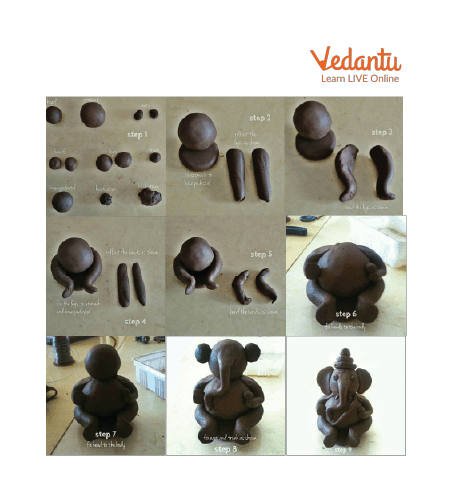
Craft with Clay for Ganesh Chaturthi
2. Paper Mache Ganesha:
Unleash your inner artist with paper mache. This versatile technique involves creating a base using newspapers and glue, allowing you to sculpt your Ganesha in any pose you desire. From a sitting Ganesha to a dancing one, the possibilities are endless. Once dried, bring your Ganesha to life with vibrant paints and decorative touches. Engage the whole family in this hands-on activity!
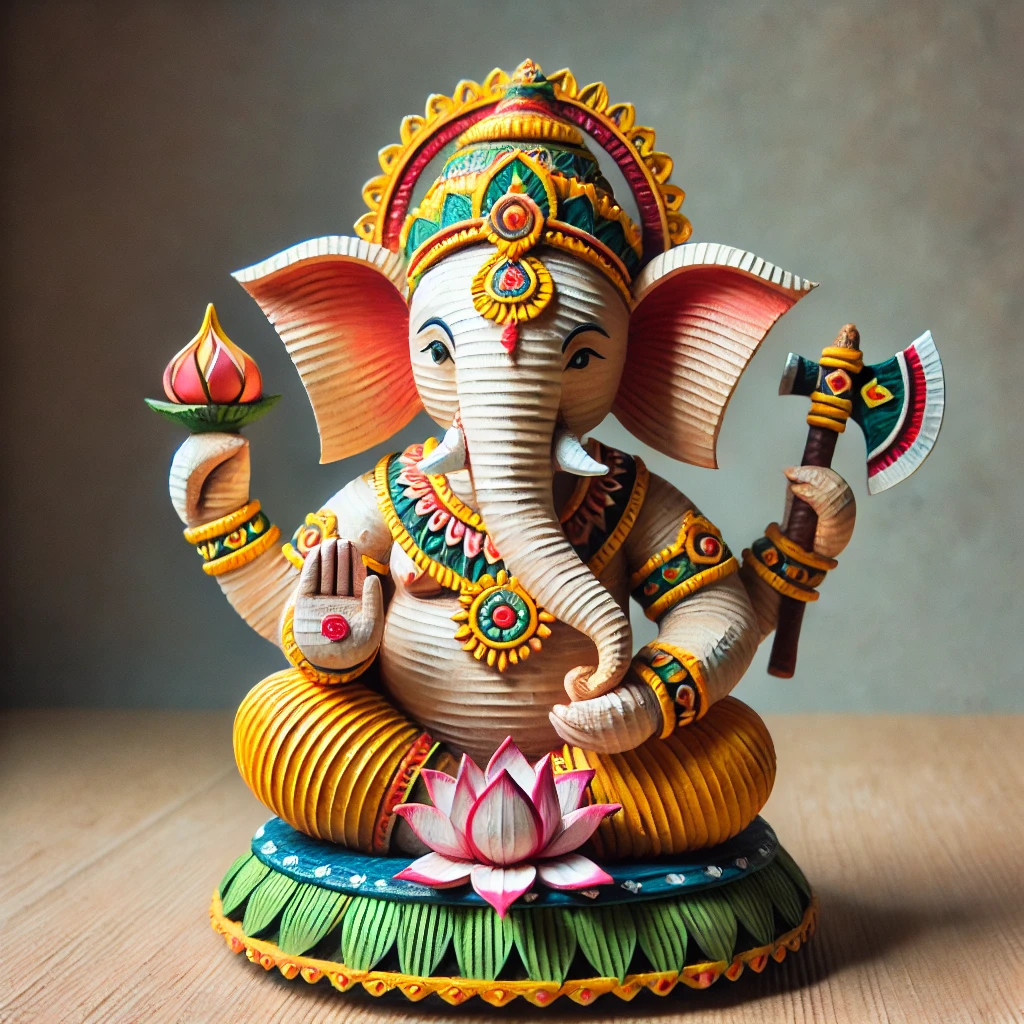
3. Clay Pot Ganesha:
Give a charming twist to your Ganesha idol by utilizing clay pots. Stack different-sized clay pots to form the body of Lord Ganesha. Decorate the pots with acrylic paints, intricate designs, and embellishments. You can even use the larger pot as the base and smaller pots for the head and body. This quirky and delightful approach will surely stand out!
4. Origami Ganesha:
For those who love the art of paper folding, origami Ganesha is a perfect choice. Fold vibrant origami papers into Ganesha shapes, paying attention to details like the elephant head and four arms. Origami offers a unique and intricate interpretation of the deity. Display your mini Ganesha idol on a shelf or as a centerpiece during the festivities.
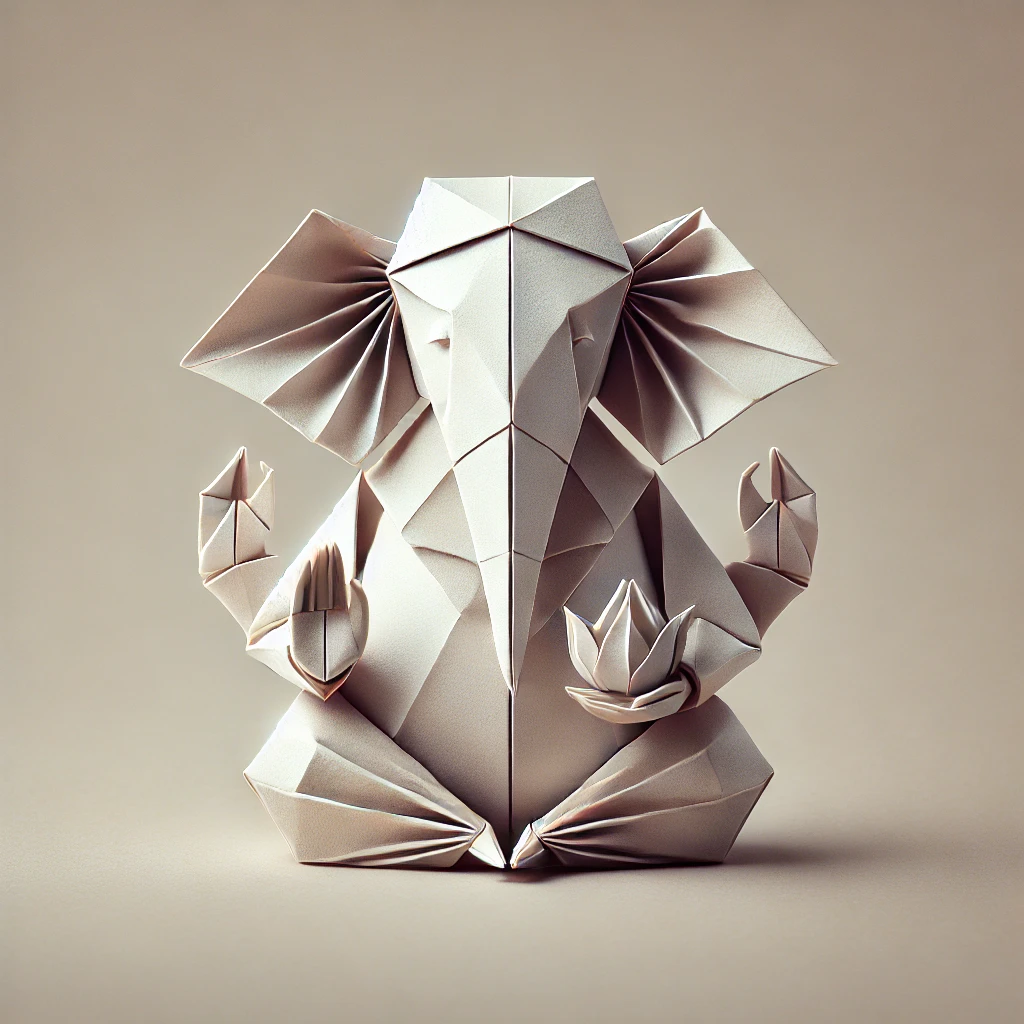
5. Dough Ganesha:
Combine your culinary skills with creativity by making a dough Ganesha idol. Craft a dough using flour, salt, and water, and mold your idol with care. This approach allows you to experiment with textures, and once baked, you can paint your Ganesha idol with edible colors, turning it into an edible art piece.
Whichever craft idea resonates with you, remember that it's the love, devotion, and effort you invest that truly make your Ganesha idol special. As you embark on this creative journey, involve friends and family. This could be a wonderful opportunity for bonding and shared creativity.
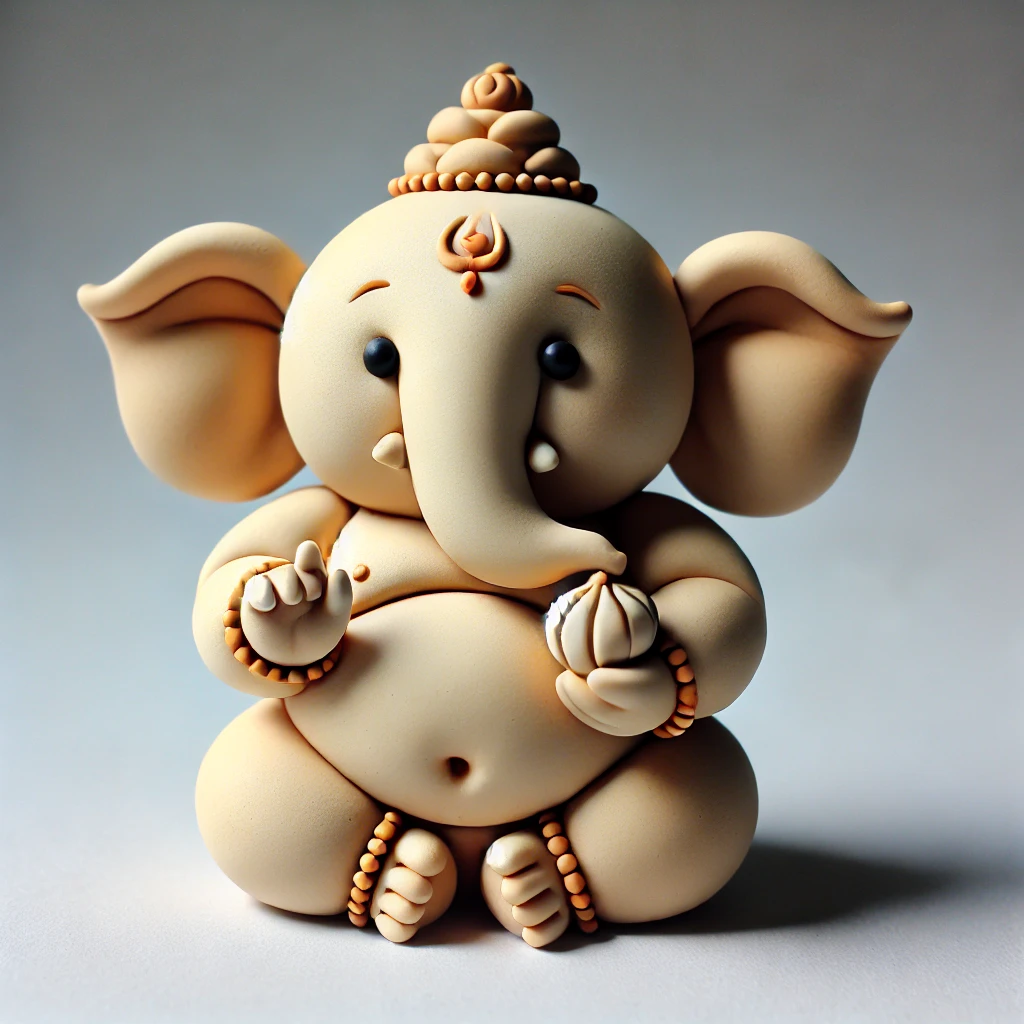
6. DIY Ganesh Masks
Materials: Cardboard, colours, and elastic bands.
Instructions: Make masks with cardboard, paint them to resemble Lord Ganesha, and attach elastic bands. These masks can be worn during the celebration or used as part of decorations.
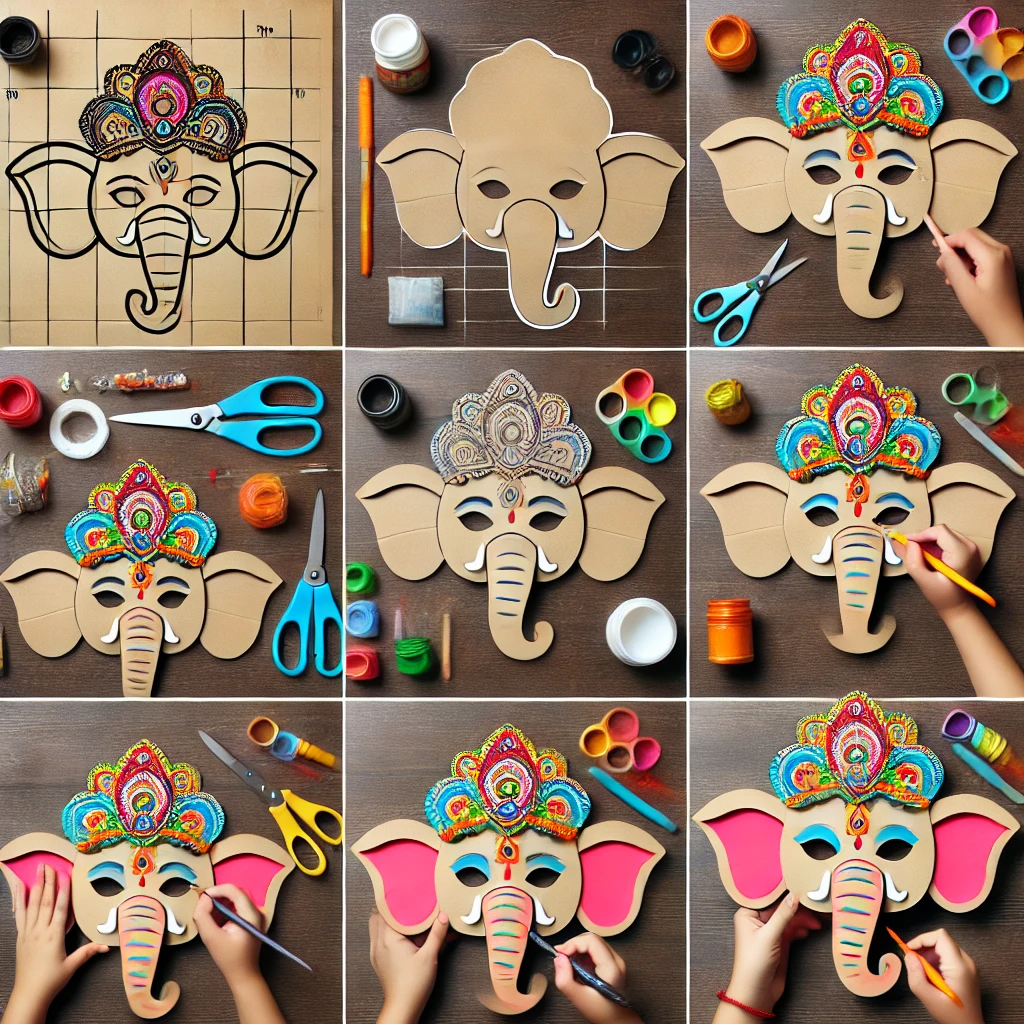
7. Handmade Torans
Materials: Paper, fabric, beads, and string.
Instructions: Make torans (door hangings) from coloured paper or fabric. Decorate them with beads and sequins, and hang them above doorways for a festive look.
But the journey doesn't end with crafting. Once your Ganesha idol is ready, place it in a respectful spot and adorn it with flowers, incense, and love. As you celebrate Ganesha Chaturthi, your handmade idol will serve as a testament to your devotion and artistic flair.
So, gather your materials, let your imagination run wild, and create a Ganesha idol that reflects your unique connection with the divine. With every stroke of your brush or every fold of paper, you're not just crafting an idol – you're weaving a story of devotion and creativity that will resonate for years to come. Happy crafting and Ganesha Chaturthi!
FAQs on 5 Best Craft Ideas to Make Your Ganesha Idol
1. How do I make the head of the idol?
The head of the idol is the most important part, so take your time and make sure it is well-proportioned. Start by rolling out a piece of clay into a ball. Then, use your fingers to shape the ball into a cone. Once the cone is formed, use a knife to carve out the features of the face, such as the eyes, nose, and mouth.
2. How do I attach the head to the body of Ganesha while making the idol?
Once the head is finished, you need to attach it to the body. To do this, make a small hole in the top of the body and insert the neck of the head into the hole. Then, use some clay to seal the joint.
Paper mache is another popular way to make a Ganesha idol. It is a lightweight and cost-effective option, and it allows you to get creative with the design.
3. What materials do I need to make Ganesha Idol for DIY Ganesh Chaturthi Decoration at Home?
You will need some basic materials to make a paper mache Ganesha idol, such as newspaper, flour, water, and glue. You may also want to use some paint, glitter, or other decorations.
4. How do I make the base of the Ganesha Idol?
The base of the idol is important for stability. You can make the base out of cardboard or foam board.
5. How do I add the details for Ganesha Idol?
Once the papier-mache is dry, you can start adding the details to the idol. You can use paint, glitter, or other decorations to make the idol look like Ganesha.
Eco-friendly Seed Ganesha Idol:
This is a unique and eco-friendly way to make a Ganesha idol. You can use seeds, lentils, or other natural materials to create the idol. This is a great way to teach children about the importance of sustainability.
6. How do I make the ears of the Ganesha idol?
To make the ears, take two small pieces of clay and shape them into flat, oval forms. Attach them to the sides of the head using a bit of water to help the clay adhere. You can then use a knife or sculpting tool to carve out the inner ear details.
7. What can I use to make an eco-friendly Ganesha idol?
For an eco-friendly Ganesha idol, you can use natural materials like clay, seeds, leaves, turmeric, and natural dyes. You can also use biodegradable materials like paper mache, which decompose easily and don't harm the environment.
8. How do I make the trunk of the Ganesha idol?
Roll a piece of clay into a thick rope-like shape for the trunk. Attach it to the centre of the face just below the eyes. Shape the trunk by curling it upwards or to the side, and add details such as ridges or patterns using a sculpting tool.
9. How can I make the hands and feet of the Ganesha idol?
For the hands, roll small pieces of clay into cylindrical shapes and attach them to the sides of the body. Shape the fingers using a knife or sculpting tool. For the feet, create small oval shapes and attach them at the base of the body. Add toes using similar techniques as for the fingers.
10. How do I paint my Ganesha idol?
Once the idol is completely dry, use acrylic paints to add colour. Start with a base coat and then add details such as clothing, ornaments, and facial features. Allow each layer of paint to dry before adding the next to prevent smudging.
11. How can I make a Ganesha idol using recycled materials?
You can make a Ganesha idol using recycled materials like old newspapers, cardboard, and plastic bottles. Use paper mache techniques to shape the idol and add details using small pieces of cardboard or other recyclable items.
12. What is the best way to dry a clay Ganesha idol?
Allow the clay idol to air dry naturally. Place it in a cool, dry place with good air circulation. Depending on the thickness of the clay, it may take a few days to a week to dry completely. Avoid using a hairdryer or oven, as this may cause cracking.
13. How do I make a seed Ganesha idol?
Start with a basic clay or paper mache structure. Before the material dries completely, press seeds, lentils, or grains into the surface to create patterns and details. This is a great way to create a textured and natural-looking idol.
14. How do I store my Ganesha idol if I want to reuse it next year?
If you plan to reuse your idol, make sure it is completely dry before storing it. Wrap it in soft tissue paper or cloth and place it in a sturdy box. Store the box in a cool, dry place away from direct sunlight to prevent any damage.







